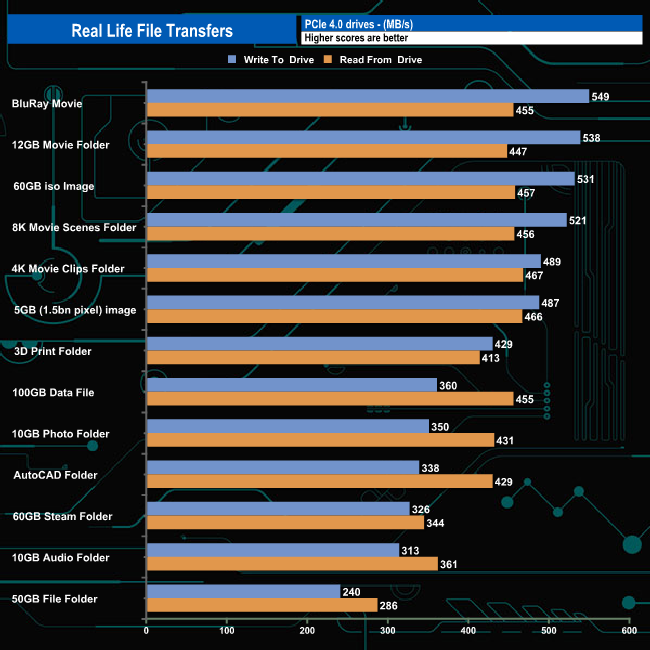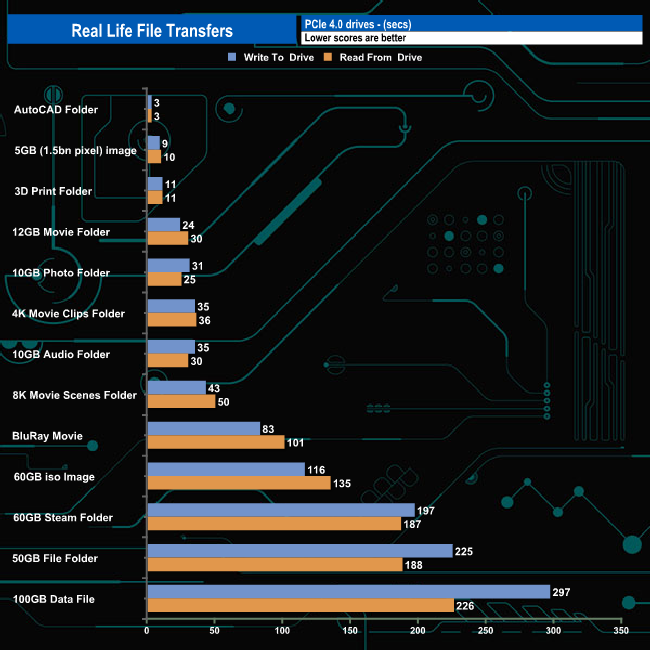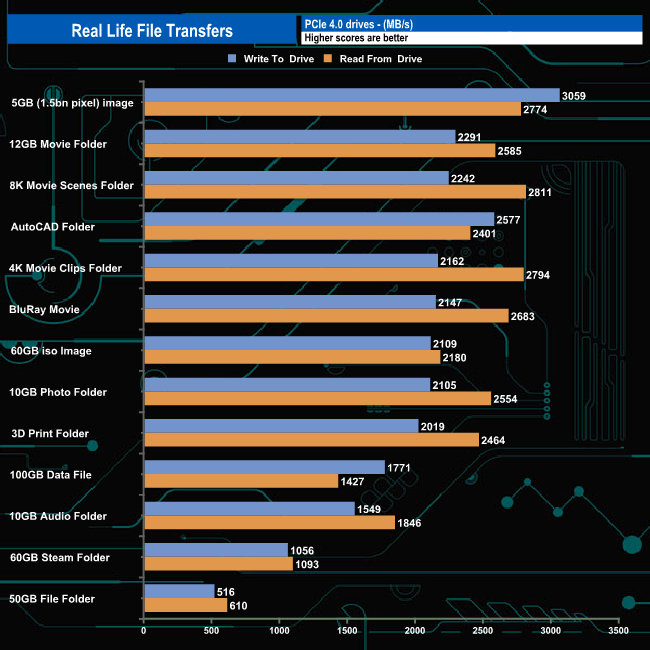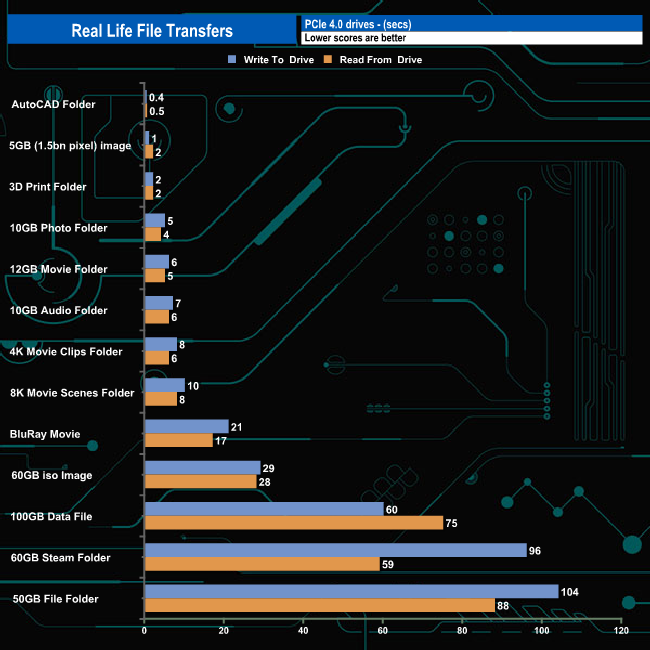To test the real-life performance of a drive we use a mix of folder/file types and by using the FastCopy utility (which gives a time as well as MB/s result) we record the performance of the drive reading from & writing to a 256GB Samsung SSD850 PRO.
We use the following file/folder types:
- 100GB data file.
- 60GB iso image.
- 60GB Steam folder – 29,521 files.
- 50GB File folder – 28,523 files.
- 21GB 8K Movie demos.
- 12GB Movie folder – 24 files (mix of Blu-ray and 4K files).
- 11GB 4K Raw Movie Clips (8 MP4V files).
- 10GB Photo folder – 621 files (mix of png, raw and jpeg images).
- 10GB Audio folder – 1,483 files (mix of mp3 and .flac files).
- 5GB (1.5bn pixel) photo.
- Blu-ray movie.
The Solidigm P41 Plus handled our real-life file transfer tests without any problems. It averaged 519MB/s for writes when dealing with the larger file size transfers and 458MB/s when reading the data back. It's not quite as efficient when dealing with smaller file sizes, averaging 293MB/s for writes and 388MB/s for reads.
To get a measure of how much faster PCIe NVMe drives are than standard SATA SSD we use the same files but transfer to and from a 2TB Kioxia Exceria Plus drive.
Writing to and reading from an NVMe drive saw transfer speeds rocket and overall transfer times dropped dramatically as you might expect. Nine of the transfers topped over 2GB/s when writing to the drive with the 5GB image transfer being the fastest at 3,059MB/s. The same nine transfers produced read speeds of over 2GB/s, the fastest being the 2,811MB/s when dealing with the 8K Movie scenes folder.
 KitGuru KitGuru.net – Tech News | Hardware News | Hardware Reviews | IOS | Mobile | Gaming | Graphics Cards
KitGuru KitGuru.net – Tech News | Hardware News | Hardware Reviews | IOS | Mobile | Gaming | Graphics Cards






